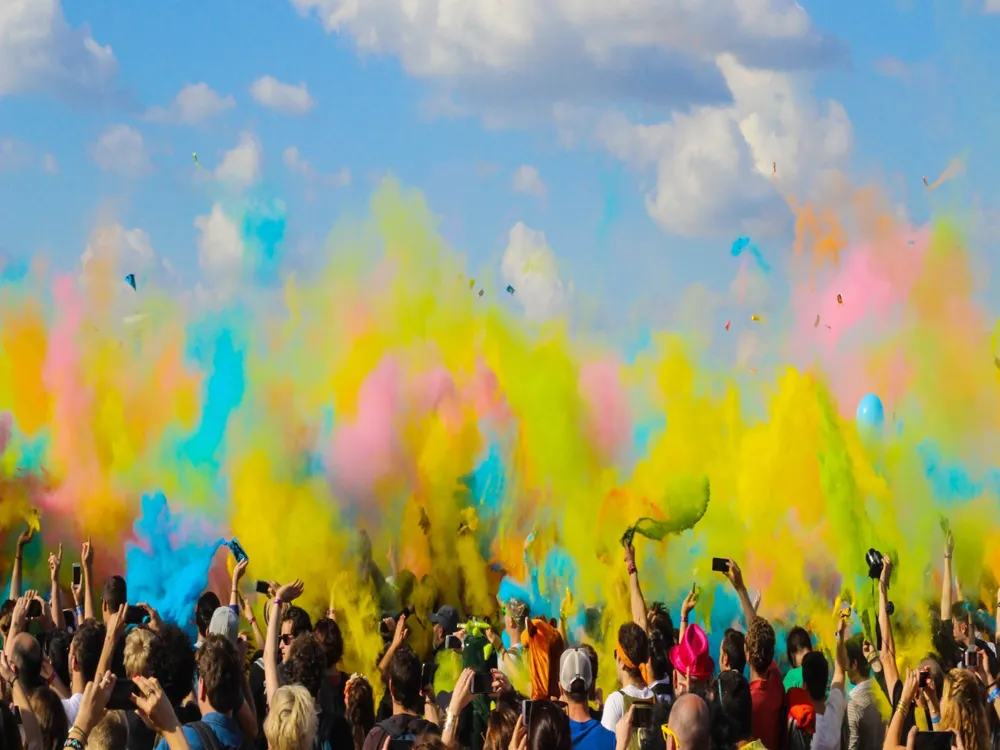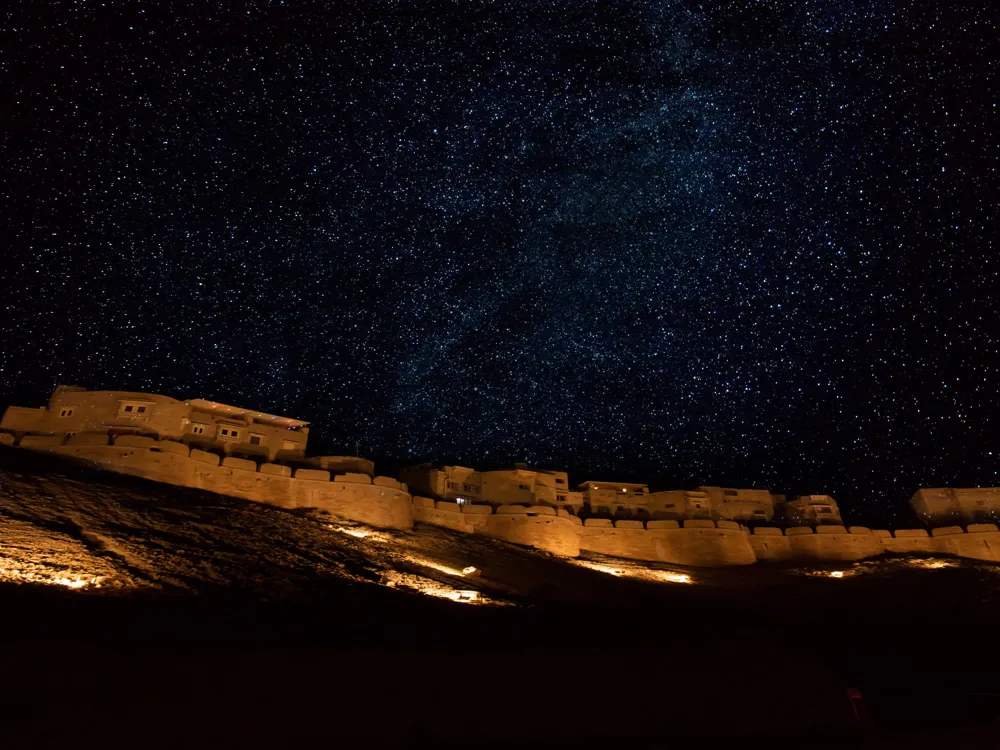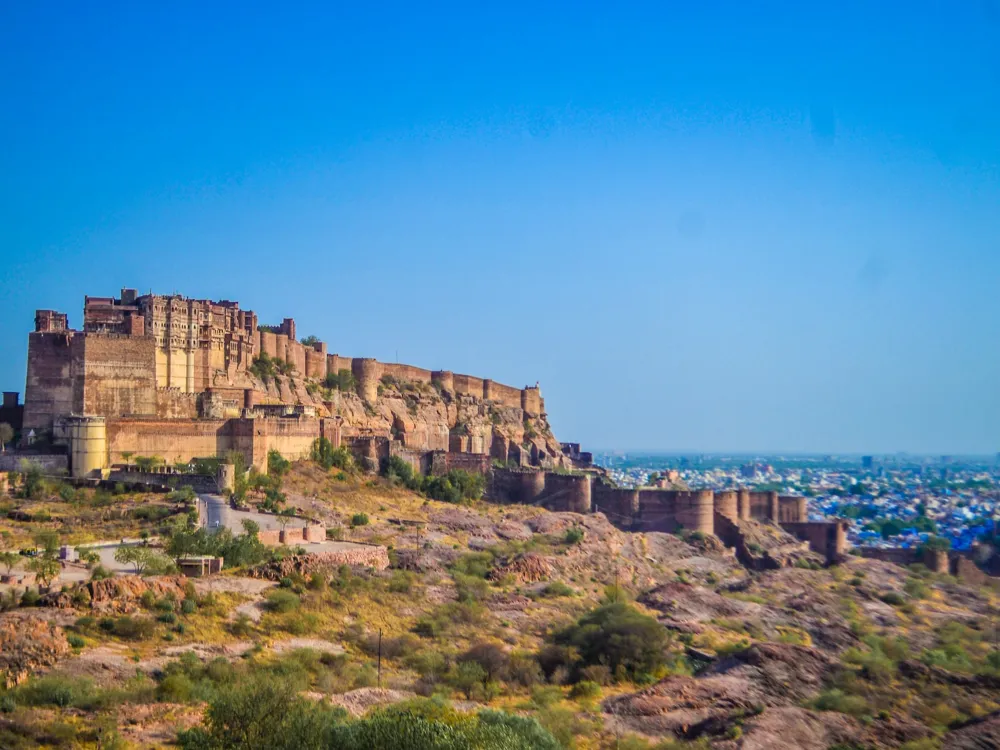The Laxmi Niwas Palace in Bikaner, Rajasthan, is a grand testament to the splendor of Indian architecture and the rich cultural heritage of the region. Constructed between 1898 and 1902 under the patronage of Maharaja Ganga Singh, the palace exemplifies a blend of Indo-Saracenic architectural style. Its red sandstone façade, intricately carved jharokhas (overhanging balconies), and latticed windows create a stunning visual impact. The palace grounds are equally impressive, featuring sprawling lawns, courtyards, and a variety of flora that add to the estate's aesthetic appeal. The interior of the Laxmi Niwas Palace is a showcase of luxurious opulence. The palace's halls and rooms are adorned with gold leaf, exquisite frescoes, and intricate filigree work. The grand Darbar Hall, with its majestic ceilings and finely crafted walls, stands as a symbol of the royal legacy of Bikaner. The palace also houses an extensive collection of Rajputana artwork, armory, and historical artifacts, providing a deep insight into the region's history and artistic traditions. The architectural brilliance of the Laxmi Niwas Palace is evident in its harmonious blend of traditional Rajasthani and Mughal designs with European influences. The palace was designed by the British architect, Sir Samuel Swinton Jacob, who incorporated elements of the Art Nouveau style, making it a unique structure in Indian architectural history. The palace's exterior is adorned with intricately carved sandstone, which is a hallmark of Rajasthani craftsmanship. The interior rooms are decorated with traditional Rajput paintings, stained glass windows, and ornate ceilings, each narrating stories of the regal past. The palace's layout follows the traditional concept of courtyards, with each section having its distinct function and aesthetic. The courtyards served as communal spaces for the royal family and their guests, and were often the site of lavish ceremonies and festivities. The use of domes, arches, and columns throughout the palace showcases the influence of Mughal architecture, while the intricate latticework and floral motifs reflect the local artisanal skills of the region. The ideal time to visit Laxmi Niwas Palace is between October and March when the weather in Rajasthan is pleasant. This period avoids the scorching summer heat and the monsoon season, providing a comfortable environment for exploring the palace and its surroundings. Opt for a guided tour to gain a deeper understanding of the palace's history, architecture, and art. Knowledgeable guides provide valuable insights and anecdotes that enrich the visiting experience. Visitors are advised to dress modestly out of respect for the cultural and historical significance of the palace. Comfortable walking shoes are recommended as the palace tour involves a fair amount of walking. Laxmi Niwas Palace is well-connected and can be easily accessed from various parts of Rajasthan. The nearest airport is the Jodhpur Airport, located approximately 250 kilometers away. Bikaner is also well-served by rail, with the Bikaner Railway Station being the nearest, offering good connectivity with major Indian cities. For those preferring road travel, Bikaner is accessible via well-maintained roads and is connected to major cities like Jaipur, Delhi, and Jodhpur. Local transportation options such as taxis, buses, and auto-rickshaws are readily available for reaching the palace from different parts of the city. Read More:Overview of Laxmi Niwas Palace, Bikaner, Rajasthan
Architecture of Laxmi Niwas Palace
Tips When Visiting Laxmi Niwas Palace
Best Time to Visit
Guided Tours
Dress Code
How To Reach Laxmi Niwas Palace
Laxmi Niwas Palace
Bikaner
Rajasthan
₹ 15,250 onwards
View bikaner Packages
Bikaner Travel Packages
View All Packages For Bikaner
Top Hotel Collections for Bikaner

Private Pool

Luxury Hotels

5-Star Hotels

Pet Friendly
Top Hotels Near Bikaner
Other Top Ranking Places In Bikaner
View All Places To Visit In bikaner
View bikaner Packages
Bikaner Travel Packages
View All Packages For Bikaner
Top Hotel Collections for Bikaner

Private Pool

Luxury Hotels

5-Star Hotels

Pet Friendly





















